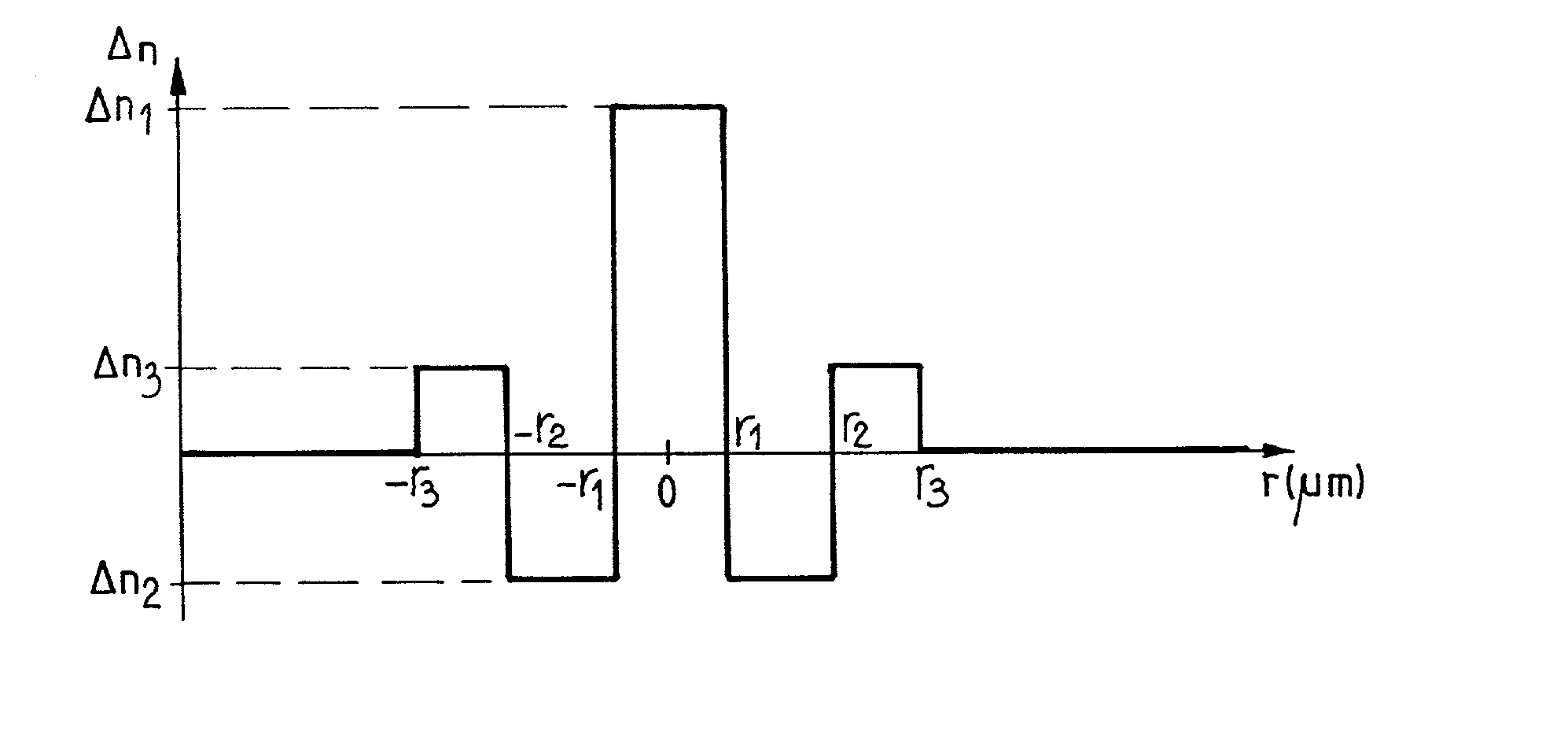Fiber for compensating chromatic dispersion of a monomode fiber in band S
a monomode fiber and fiber technology, applied in the direction of optical fibers with desired dispersion, cladded optical fibres, instruments, etc., can solve the problems of chromatic dispersion slope, particularly severe chromatic dispersion, and more severe problems
- Summary
- Abstract
- Description
- Claims
- Application Information
AI Technical Summary
Benefits of technology
Problems solved by technology
Method used
Image
Examples
Embodiment Construction
[0027] The invention proposes a chromatic dispersion-compensating fiber suitable for compensating the chromatic dispersion of a step index monomode fiber in band S. The fiber is monomode at 1475 nm. It has chromatic dispersion of less than -40 ps / (nm.multidot.km) around 1475 nm, a chromatic dispersion slope less than -0.16 ps / (nm.sup.2.multidot.km), and an effective section area greater than or equal to 14 .mu.m.sup.2 around said wavelength value. It is also possible to provide for the ratio of the chromatic dispersion over the chromatic dispersion slope to present the value of less than 250 nm around said wavelength of 1475 nm, this ensures that the cumulative dispersion in each channel in the range 1450 nm to 1500 nm has an absolute value of less than 70 ps / nm, on average for transmission over 100 km when the fiber is used as a compensation fiber for an SMF.
[0028] The fiber of the invention makes it possible to compensate chromatic dispersion and chromatic dispersion slope for tra...
PUM
 Login to View More
Login to View More Abstract
Description
Claims
Application Information
 Login to View More
Login to View More - R&D
- Intellectual Property
- Life Sciences
- Materials
- Tech Scout
- Unparalleled Data Quality
- Higher Quality Content
- 60% Fewer Hallucinations
Browse by: Latest US Patents, China's latest patents, Technical Efficacy Thesaurus, Application Domain, Technology Topic, Popular Technical Reports.
© 2025 PatSnap. All rights reserved.Legal|Privacy policy|Modern Slavery Act Transparency Statement|Sitemap|About US| Contact US: help@patsnap.com



